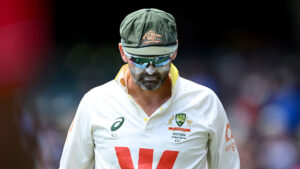
Narcolepsy, a rare sleep disorder, affects an estimated one in 2,000 to 5,000 Australians, yet remains largely misunderstood. On Monday, September 22, World Narcolepsy Day aimed to raise awareness about this condition, characterized by excessive daytime sleepiness, sleep attacks, and cataplexy—a sudden loss of muscle strength triggered by emotions.
Dr. Moira Junge, CEO of the Sleep Health Foundation, highlighted the multifaceted challenges faced by those living with narcolepsy. A significant issue is the frequent misdiagnosis of the condition as depression or mere laziness. “Many sleep disorders, including narcolepsy, are misattributed to laziness, depression, or poor lifestyle choices, which delays diagnosis often for up to 10 years,” Dr. Junge explained.
The Struggles of Living with Narcolepsy
For individuals with narcolepsy, overwhelming exhaustion complicates daily life, affecting their ability to maintain full-time employment. In regions like the Yarra Ranges, the condition poses unique risks due to the area’s dependence on cars. Dr. Junge noted, “People with untreated narcolepsy may be advised not to drive, especially if they experience cataplexy or sleep attacks.” This limitation can result in social and economic isolation.
Mark Taylor, a 48-year-old resident of the Yarra Ranges, shared his personal journey with narcolepsy. Diagnosed only after a decade of uncertainty, Taylor described the impact on his life: “I thought there’s something not right here, I shouldn’t be this tired, I should be more functional.” His condition worsened after contracting dengue fever, leading to a medical discharge from the navy in 2020.
Diagnosis and Treatment Challenges
Narcolepsy is caused by a deficiency of orexin, a neuropeptide that regulates wakefulness and mood. The disorder is akin to a faulty light switch, where sleep unpredictably intrudes into wakefulness. While stimulants like dexamphetamine and wakefulness promoters such as modafinil are common treatments, they only offer temporary relief without addressing the root cause.
Dr. Junge emphasized the additional challenges faced in car-dependent areas: “With sparse public transport, not being able to drive can mean missing medical appointments, work opportunities, or community events, as well as an increased reliance on others.” This reliance can strain personal relationships and reduce independence.
The Emotional Toll and Mental Health Implications
Connor Millsom, diagnosed at 24, expressed a sense of grief over the years lost to undiagnosed narcolepsy. “After diagnosing it, I felt a sort of grief I suppose, or a guilt about the years that I’d been unmedicated,” he said. The mental health impact of narcolepsy is significant, often co-existing with anxiety and depression.
Dr. Junge noted, “There is also the mental health overlap: Sleep disorders often co-exist with anxiety and depression. There is also social stigma… People may be judged unfairly for symptoms like sudden sleep attacks or excessive daytime sleepiness.” This stigma contributes to the mental health burden experienced by those with narcolepsy.
Reflecting on his condition, Millsom described the unique exhaustion felt by those with narcolepsy: “It’s not just tiredness. It’s exhaustion, it’s incapacity, it’s paralysis.” These words encapsulate the profound impact of narcolepsy on daily life and mental well-being.
As awareness grows, the hope is for improved understanding and support for those living with narcolepsy, ensuring they receive timely diagnoses and effective management strategies.







